A Data Table in a chart is a tabular representation of chart data that's placed along with the chart itself, as shown in Figure 1, below. Just adding a Data Table essentially shows the table in the default formatting, and that may work most of the time. If it doesn't, you may want to explore some advanced options that let you format your Data Table exactly as you want. This may help you to highlight text or gridlines so that you can make the Data Table stand out.
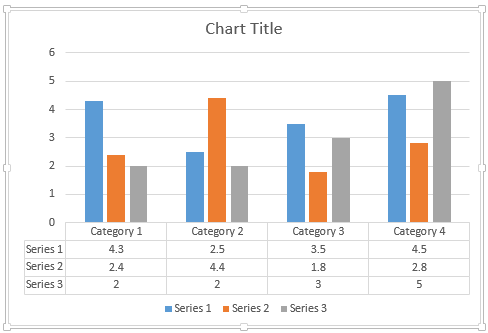
Figure 1: Chart with Data Table
You can format this Data Table in various ways such as removing some of the gridlines from the table, formatting text and gridlines, adding shadow, etc. Explore more in the following steps in PowerPoint 2013 for Windows:
- Select the chart that already has a Data Table as shown in Figure 1, above. Then, click the Chart Elements button that comes up when you select a chart on the slide (the plus sign highlighted in red within Figure 2, below). Doing so opens the Chart Elements gallery. Within the Chart Elements gallery, hover your cursor over the Data Table option. This reveals a right-arrow as shown highlighted in blue within Figure 2. Click this right-arrow to open the Data Table sub-gallery. Within this sub-gallery, select More Options (highlighted in green within Figure 2).
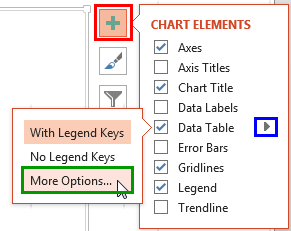
Figure 2: Data Table sub-gallery - This step opens the Format Data Table Task Pane as shown in Figure 3. In this Task Pane, you'll find the Table Options and Text Options tabs, highlighted in red within Figure 3. These two tabs provide you with all Chart Data Table formatting options.
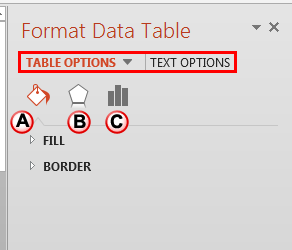
Figure 3: Chart Data Table Options within Format Data Table Task Pane - Let us start with exploring the options within the Table Options tab, as marked in Figure 3, above. Do note that some of these options listed below link to further tutorials with more detail. Although the linked tutorials pertain to Chart Area, the same principles hold good for Data Table too.
A. Fill & Line
- Here, you will find the Fill and Border options for the Data Table as shown in Figure 3, above:
Fill
- Includes various options that are used to format the fill of the Data Table.
Border
- Includes various options that are used to format the lines within the Data Table.
- To learn more about these options, refer to our Fill and Line Options for the Chart Area in PowerPoint 2013 tutorial.
B. Effects
- Here, only Shadow, Glow, and Soft Edges effects (highlighted in green within Figure 4) are available for the Data Table.
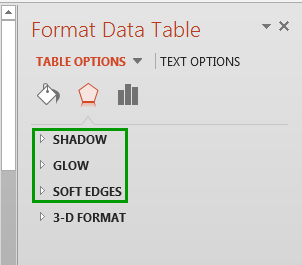
Figure 4: Effects options for Chart Data Table - To explore more, refer to our Effect Options for Chart Area in PowerPoint 2013 tutorial.
C. Table Options
- Using the options shown within Figure 5, below you can control the gridlines to be displayed within the Chart Data Table.
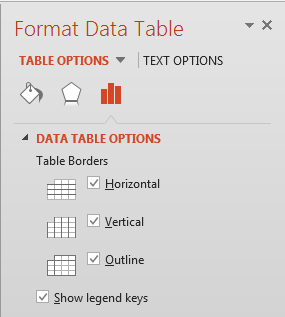
Figure 5: Data Table Options within Format Data Table Task Pane - Select the check-boxes shown in Figure 5, above to show/hide Horizontal, Vertical, and Outline gridlines within the Chart Data Table. You can also show/hide the legend keys (when the Show legend keys check-box is selected, the color blocks are displayed with the legends).
- The Text Options tab of the Format Data Table Task Pane (highlighted in red within Figure 6) provides you with text editing options for your Chart Data Table text, as shown in Figure 6, below.
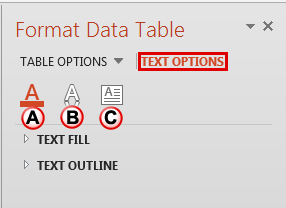
Figure 6: Text Options tab within the Format Data Table Task Pane - Let us explore the options within the Text Options tab, as marked in Figure 6.
A. Text Fill & Outline
- Change text fill and outline of the Data Table text, as explained in our Text Fill & Outline Options for Chart Area in PowerPoint 2013 tutorial.
B. Text Effects
- Choose from only Shadow, Reflection, and Glow effects (highlighted in red within Figure 7) to make your Data Table text stand apart.
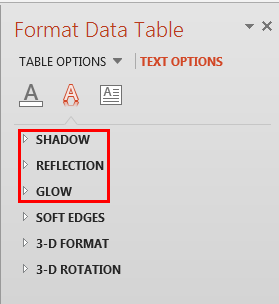
Figure 7: Text Effects Text for Chart Data Table - For more information, refer to our Text Effects Options for Chart Area in PowerPoint 2013 tutorial
C. Textbox
- None of the Textbox options are available for the Data Table text.
- Select the appropriate option and format the Data Table as required. Figure 8, below shows our sample chart with formatted Data Table (compare with the chart in Figure 1, previously shown on this page).
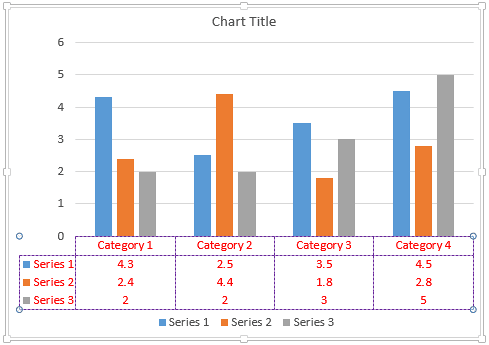
Figure 8: Chart with formatted Data Table - Save your presentation often.











